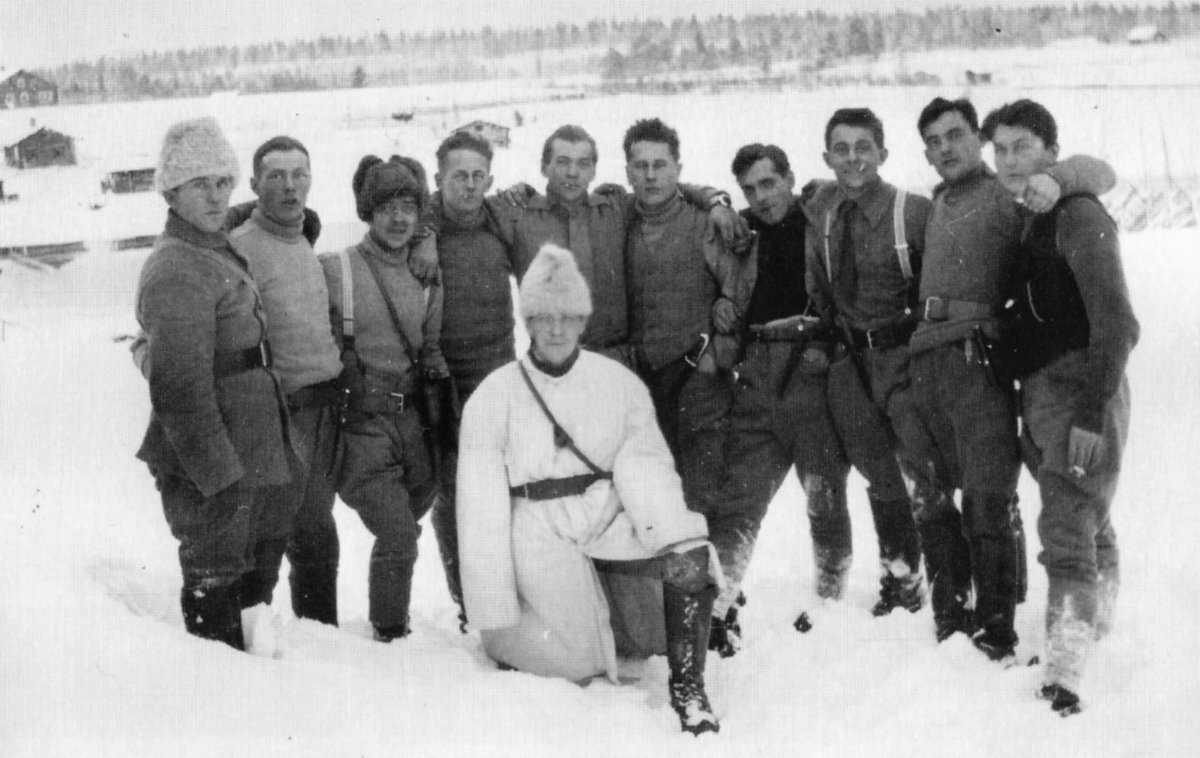
Between 1918-1919, the British intervention forces supported Karelian Nationalism as a counterweight to Finnish expansion in East Karelia. A Karelian regiment fought under British command against the Finnish Viena expedition. 1/19
https://twitter.com/m39_respecter/status/1219283059914289154
In 1919 the British left, letting the White Russian forces rule over the region, ending their support for an independent Karelian state. In late 1919, the Karelians drove out the Russians and created an autonomous zone in Viena with their own government. 2/19 



In 1920, the Karelian worker’s commune was established. It aimed to create a Karelian Soviet Republic which could push for a revolution in Finland and Scandinavia. The Commune was anything but Karelian, being mostly led by exiled Finnish communists. 3/19 



In the latter half of 1920, The Red Army occupied Viena, imposing the rule of the worker’s commune on Karelians. The Viena government fled to Finland and with Finnish help, Karelians began forming guerrilla troops to fight the occupants. 4/19 

In the beginning of 1921, the Treaty of Tartu came into effect. Finnish troops left the municipalities of Repola and Porajärvi and the de facto state of war between Finland and the Soviet government was over. 5/19
https://twitter.com/m39_respecter/status/1196450470975463430
The Red Army continued to occupy Karelia and expropriated food and necessities from the locals. As the famine in Karelia worsened and as the Soviets instituted a forced labor service, more and more people joined the Karelian guerrillas. 6/19 

The Guerrillas were led by Ukki Väinämöinen, a deeply religious Karelian nationalist who conjured an image of a Kalevalan hero. The Karelian uprising was the first of the kinship wars, started spontaneously by the locals. 7/19 



Their military tactician was Jalmari Takkinen aka. “Ilmarinen”. Takkinen was a Finnish soldier who had served in Repola under Bobi Sivén. They had planned an armed uprising of the Karelians and had acquired weapons, before the plan had been abandoned. 8/19 



Takkinen knew the Karelians couldn’t win alone against the Soviets, but believed that unrest could rise in Russia which could lead to a revolution. He also thought that Finns would come to their help- after all, the Soviets had violated the treaty of Tartu. 9/19 



The East Karelian uprising began in October of 1921. Communist local representatives were executed and Red Army units were destroyed. The Karelians traveled from village to village, recruiting more people to their ranks. 10/19 





By the end of the year, they controlled most of Viena. However, the guerrillas had no medical logistics, communications, heavy weaponry or food. They had various small arms from different armies and were seriously short on ammunition. 11/19 



They began asking for help from Finland. Many veterans of the previous Kinship wars answered their call and came to Karelia. Weapons and humanitarian aid began to make their way across the border. 12/19 





In December, the Soviets took the rebellion seriously and began assembling troops by the Murmansk railway. Because of the snow, heavy weaponry couldn’t be used. The Reds would instead pioneer winter warfare with ski troops. 13/19 





Because of the guerrillas were small in number and had poor communications, their lines were easily breached. In January, a Finnish Red ski company, led by Toivo Antikainen destroyed a Karelian base in Kiimasjärvi, creating chaos behind their lines. 14/19 



Although some Finnish politicians sympathized with the Karelians, they wanted to stay officially neutral. They tried to appeal to the League of Nations, but to no avail. 15/19 

Because the guerrillas weren’t able to cut the Murmansk railway, the Soviets could move in more and more troops. The overwhelming enemy, famine, freezing cold and lack of ammunition forced the Karelians to retreat. 16/19 





After the Soviets pressured the Finnish government, Interior Minister Heikki Ritavuori closed down the Finnish border and prevented the movement of aid and volunteers. In February, Ritavuori was murdered by a Nationalist activist. 17/19 

The last Guerillas retreated to Finland and were disarmed. They were followed by tens of thousands of Karelian refugees. Their homes had been burnt down and many villages were emptied. Out of those Karelians that remained, many were imprisoned by the Cheka. 18/19 

The East Karelian uprising was the last of the Finnish Kinship wars. The failure to liberate Finnic peoples and the betrayal by the Finnish government would serve as the impetus for the interwar Finnish nationalist movement. 19/19
https://twitter.com/m39_respecter/status/1191795348160864256
• • •
Missing some Tweet in this thread? You can try to
force a refresh



